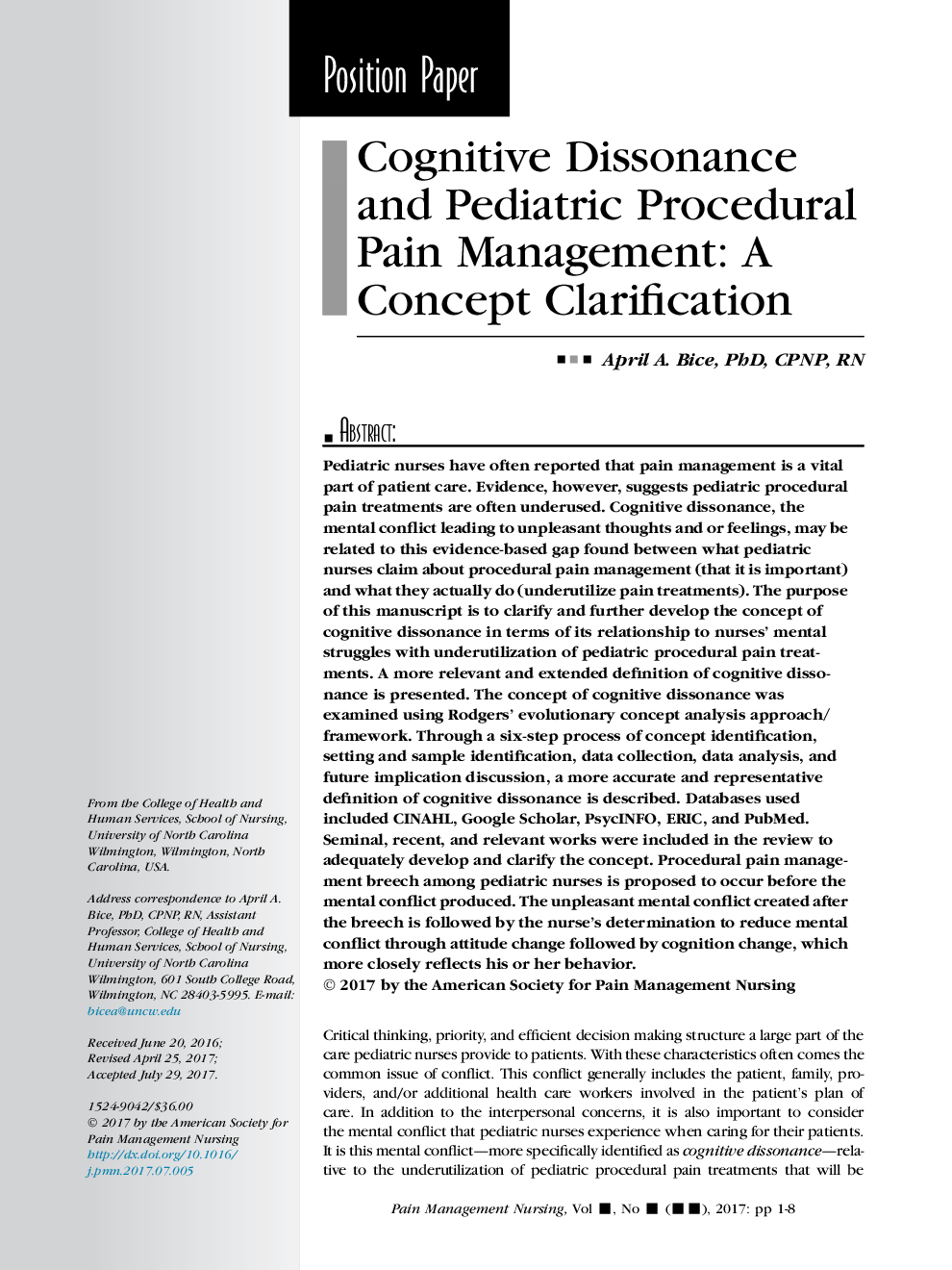| Article ID | Journal | Published Year | Pages | File Type |
|---|---|---|---|---|
| 8578736 | Pain Management Nursing | 2018 | 8 Pages |
Abstract
Background: Pediatric nurses have often reported that pain management is a vital part of patient care. Evidence, however, suggests pediatric procedural pain treatments are often underused. Cognitive dissonance, the mental conflict leading to unpleasant thoughts and or feelings, may be related to this evidence-based gap found between what pediatric nurses claim about procedural pain management (that it is important) and what they actually do (underutilize pain treatments). Objective: The purpose of this manuscript is to clarify and further develop the concept of cognitive dissonance in terms of its relationship to nurses' mental struggles with underutilization of pediatric procedural pain treatments. A more relevant and extended definition of cognitive dissonance is presented. Design: The concept of cognitive dissonance was examined using Rodgers' evolutionary concept analysis approach/framework. Analysis Methods: Through a six-step process of concept identification, setting and sample identification, data collection, data analysis, and future implication discussion, a more accurate and representative definition of cognitive dissonance is described. Databases used included CINAHL, Google Scholar, PsycINFO, ERIC, and PubMed. Seminal, recent, and relevant works were included in the review to adequately develop and clarify the concept. Conclusions: Procedural pain management breech among pediatric nurses is proposed to occur before the mental conflict produced. The unpleasant mental conflict created after the breech is followed by the nurse's determination to reduce mental conflict through attitude change followed by cognition change, which more closely reflects his or her behavior.
Related Topics
Health Sciences
Medicine and Dentistry
Anesthesiology and Pain Medicine
Authors
April A. PhD, CPNP, RN,
